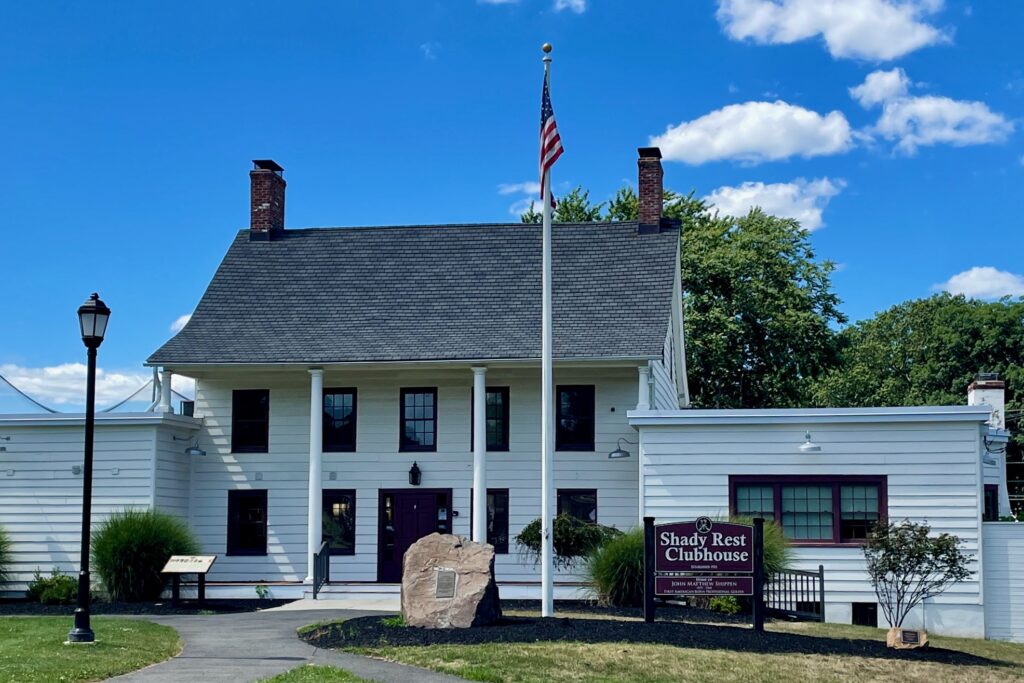September 27, 2024
The nation’s first Black-owned and operated country club is getting restored thanks to a $75,000 grant.
The first Black-owned and operated country club in the United States is restored thanks to a $75,000 grant.
Shady Rest Country Club in Scotch Plains, New Jersey, the nation’s first and oldest Black-owned country club, is one of 30 sites chosen to receive $3 million in grant funding to preserve its significance in Black history. In July, NPR reported that the African American Cultural Heritage Action Fund, a program under the National Trust for Historic Preservation, granted $75,000 to the country club to support its restoration efforts.
Originally constructed in the mid-1700s as a farmhouse, the building was later converted into a tavern and eventually became the Westfield Country Club. In 1921, a group of Black investors under the Progressive Realty Company Inc. acquired the property. It transformed it into the Shady Rest Country Club, creating a haven for sports and leisure for Black Americans at a time when racial segregation was the norm.
The funding will help the Preserve Shady Rest Committee, which has been working to restore the country club since the group’s 2013 formation.
“It’s history. Plain and simple. Period. History,” Sylvia Hicks, the former chairperson of the committee, said of the significance of preserving the clubhouse.
Throughout its history, Shady Rest welcomed numerous sports icons, including John Shippen Jr., the nation’s first professional and Black golfer, and Althea Gibson, the groundbreaking Grand Slam-winning tennis player who was the first Black woman to break the color barrier in international tennis. Shady Rest’s influence extended beyond sports, becoming a lively after-hours destination for East Coast entertainment. Musicians would perform at its basement nightclub, Villa Casanova, after their shows in New York City.
Bobby Mendelson is carrying on a family tradition as he regulars Shady Rest to play golf with his 6-year-old son, Leo, a pastime he used to enjoy with his father when he was a young boy. Mendelson sees the work done to restore the country club and is eager to see more.
“I think it’s really important to the history of the town and the area,” he said. “Not to mention, in this case, civil rights, and I think it gives us pride in the area. And honestly, it’s really nice. It’s important to remember those kinds of important things and to feel good about them.”
Brent Leggs, executive director of the African American Cultural Heritage Action Fund, notes the immense demand for preservation funding. The Action Fund must be highly selective. Since 2018, it has invested $27 million in supporting 304 heritage sites.
“Since inviting proposals, the Action Fund’s National Grant Program has received 6,169 funding proposals requesting $709 million,” Leggs said.
This year’s grant recipients represent various regions, sites, and stories from California to Georgia and Minnesota to Texas.
“We work with external partners like the Association of African American Museums or the Hutchins Center at Harvard University to help us evaluate the competitiveness and to select our grantees,” Leggs explained. “We are often looking for diversity of geography, of archetypes and stories.”
As for Shady Rest, Tom Donatelli, the current chair of the Shady Rest committee, says the funding will be used for “engineering and architecture” restorations, including the top floors of the building and The Villa Casanova.
Post Views: 75

